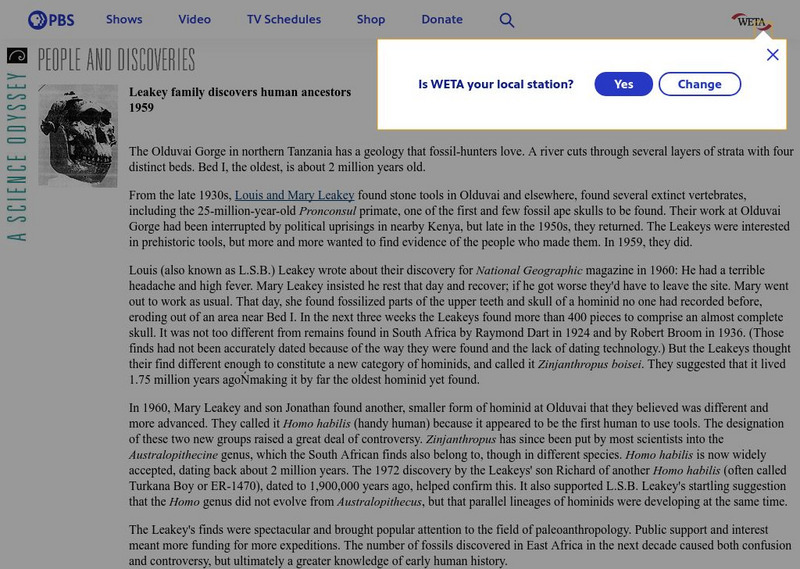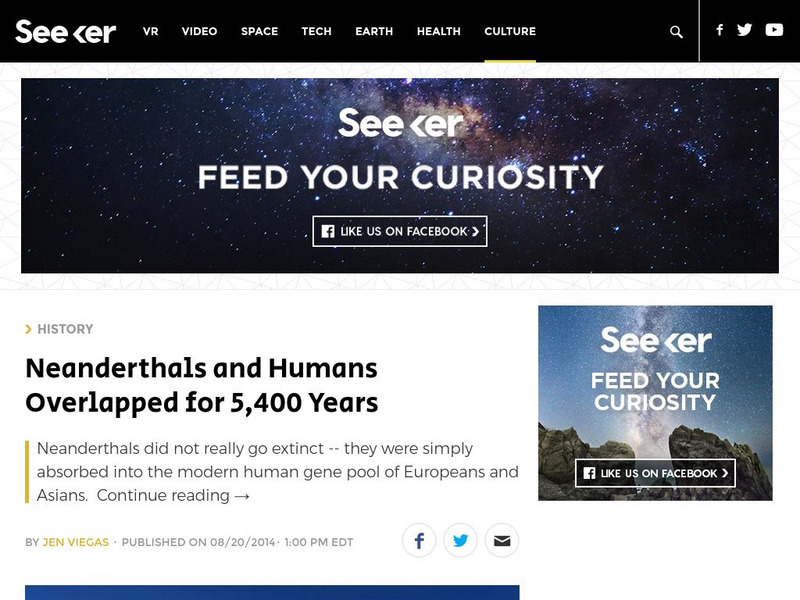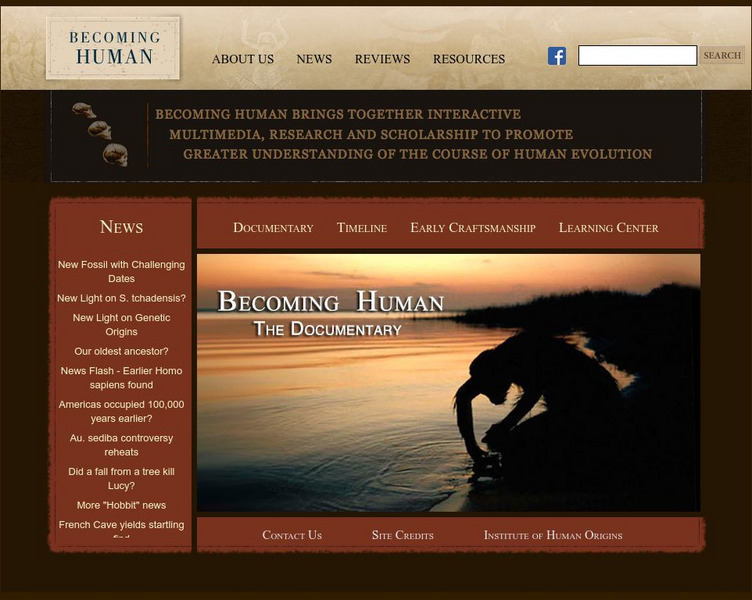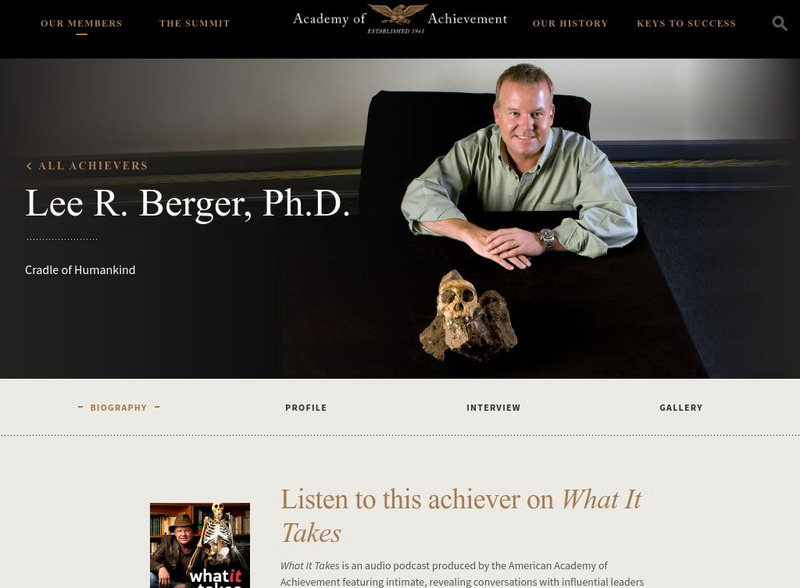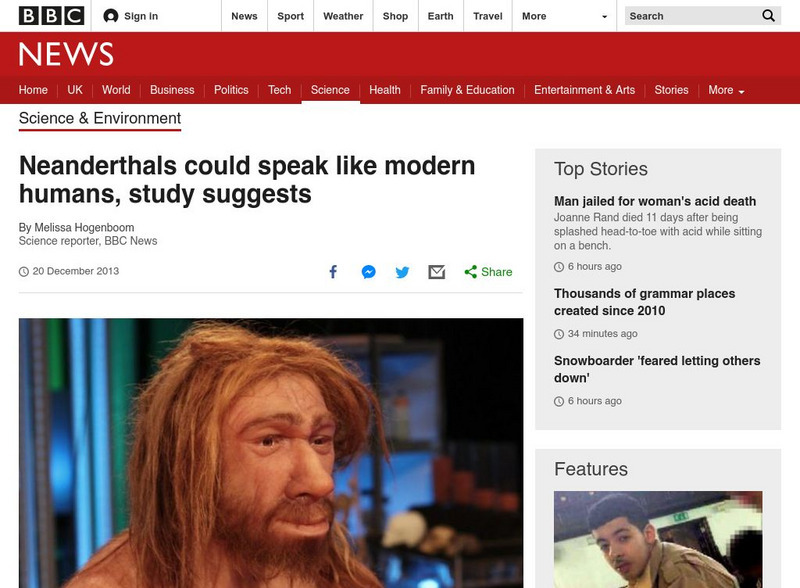Hi, what do you want to do?
Curated OER
Australia: Aboriginal Religion
Learners compare and contrast Christianity and the religion of the Aborigines in Australia. In this Aboriginal religion lesson, students discuss the creation story of the Aborigines and discuss the "dreamtime." ...
Curated OER
The Ultimate Predator
Students listen to a lecture by the teacher about the "Ultimate Predator." They design a new "Ultimate Predator." Students present their creations to the class and attempt to convince their classmates that their predator is indeed the...
Curated OER
Whale Adaptations
Learners explore whales and how they have adapted to survive in the ocean. In this whale adaptations lesson students complete several activities that allow them to investigate animal adaptations.
Curated OER
Big Dogs, Little Dogs
Students explore how dogs are industrious workers and beloved pets, helpful companions and highly paid entertainers.
Curated OER
Biology Chapter 15 Word Search Puzzle
In this biology worksheet, middle schoolers look for the words that are related to the theme of the worksheet. They also work on the skills of spelling and word recognition.
Curated OER
Blocks And Screws (or "screwy Contrivances")
Students, given a block of wood and a screw or nail, are asked to put that screw or nail into a block. They examine how many contrivances and other imperfections found in living things are best explained by the process of evolution.
Curated OER
Life with Energy
Learners identify forms of energy and the advantages/disadvantages of different forms of energy. They describe ways in which technology affects the environment both good and bad. Finally, benefits are determines as well as the...
Khan Academy
Khan Academy: Gallery: Human Ancestors
A gallery of information about our human ancestors. Explore this page to find the genetic differences and similarities between humans and other species.
PBS
Pbs: Leakey Family Discovers Human Ancestors
The PBS site covers the Leakey family and their discoveries in Olduvai Gorge in Tanzania. This information was part of a PBS exploration of human evolution.
Seeker
Seeker: Week of 8 25 14: Neanderthals, Humans Overlapped for 5,400 Years
Learn why recent discoveries are causing scientists to rewrite the timeline of modern humans and Neanderthals.
Curated OER
Cbc: The Great Human Odyssey: Homo Sapiens: Child of the Ice Age
A fascinating look at where humans came from. The interactive journey begins in Ethiopia over four million years ago with our ancestor, Ardipithecus ramidus. It continues at intervals along a timeline up to the present. The journey is...
Other
Institute of Human Origins: Becoming Human
Multimedia-rich guide for anyone making their way through a study of human origin. Find information and analysis about the fossil record, comparative anatomy, theories, and the cultural adaptations of humans and their ancestors. With an...
Howard Hughes Medical Institute
Hhmi: Bio Interactive: Using Dna to Trace Human Migration
A slideshow tracing human migration to show that "all living humans originated from populations of ancestors who migrated out of Africa less than 100,000 years ago. Learn how scientists have used genetic markers to trace the migration...
BBC
Bbc News: Science and Nature: 'Hobbit' Joins Human Family Tree
Take a look at the newly found species called the 'hobbit' that lived 12,000 years ago on the Flores Island and that is said to be linked to humans.
American Academy of Achievement
Academy of Achievement: Lee R. Berger, ph.d.
A biography of Lee Berger, a paleoanthropologist who made critical discoveries about our human ancestry during his explorations in Southern Africa. As he talks of his discoveries, you can feel his palpable excitement. Includes a profile,...
BBC
Bbc: Week of 12 23 13: Neanderthals Could Speak Like Modern Humans
How do you imagine Neanderthals to have sounded? Have you ever considered that they might sound like you? Read this article to explore what a new study now says about the speaking capabilities of these creatures.
PBS
Pbs Learning Media: Riddle of the Bones
At the online companion Web site of "Evolution," the seven-episode series on PBS, piece together clues to how one of our early ancestors looked as you examine images from four significant fossil finds of Australopithecus afarensis.
Khan Academy
Khan Academy: Actvity: Early Ancestors
How much do you know about our early ancestors? In this activity you will explore our early ancestors and the evolutionary processes that led to human evolution.
Khan Academy
Khan Academy: Quiz: How Our Ancestors Evolved
A fourteen question quiz about human evolution. Test your knowledge of how our ancestors have evolved.
Smithsonian Institution
National Museum of Natural History: Human Characteristics: Tools & Foods
Learn about the history of how humans have used tools to meet their need for food, beginning with the ancient tools our ancestors used millions of years ago. Non-human primates also use some tools.
Khan Academy
Khan Academy: Gallery: How Did the First Humans Live?
Follow the human migration with this gallery that allows you to observe how our ancestors lived and gathered food.
A&E Television
History.com: How Early Humans Survived the Ice Age
The most recent ice age peaked between 24,000 and 21,000 years ago, when vast ice sheets covered North America and northern Europe, and mountain ranges like Africa's Mt. Kilimanjaro and South America's Andes were encased in glaciers. At...
Georgetown University
Georgetown: Georgetown Slavery Archive Humanizing the Narrative the Queen Family
In this podcast, Georgetown University American Studies students Megan Howell and Catherine Kelly explore Georgetown's history with the institution of slavery. To humanize this narrative, they have chosen to focus on this history through...
Bagheera
Bagheera.com: Extinct in the Wild Neanderthals
This is quite a thought provoking article putting neanderthals in the category of extinct animals. Most of us have not thought of early human ancestors in this way, but this article and the thought questions at the end provide some good...













